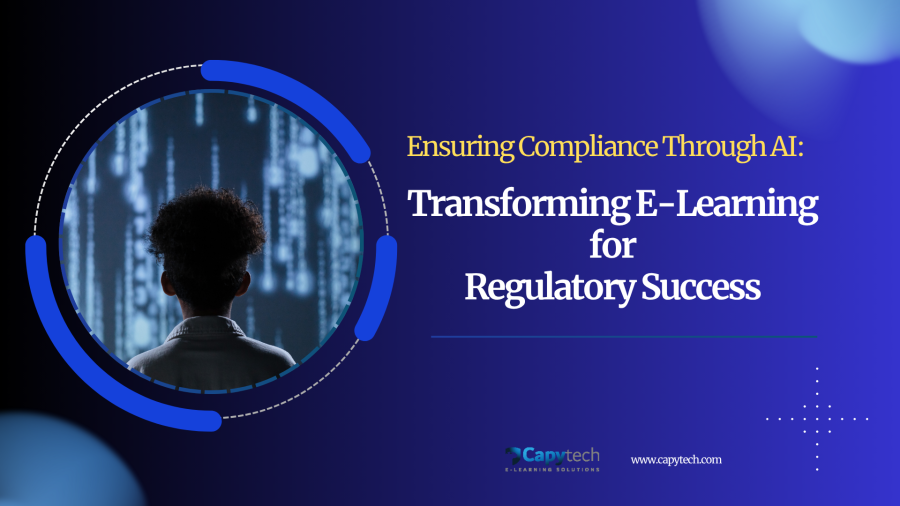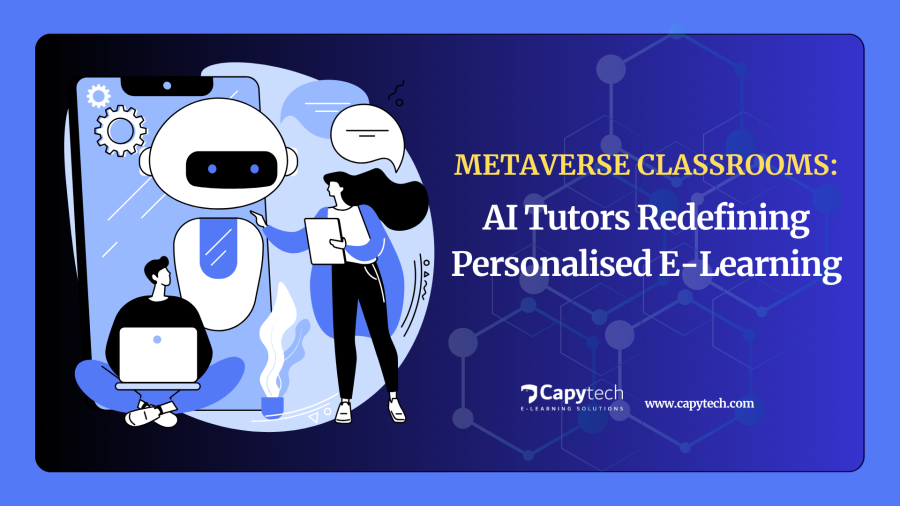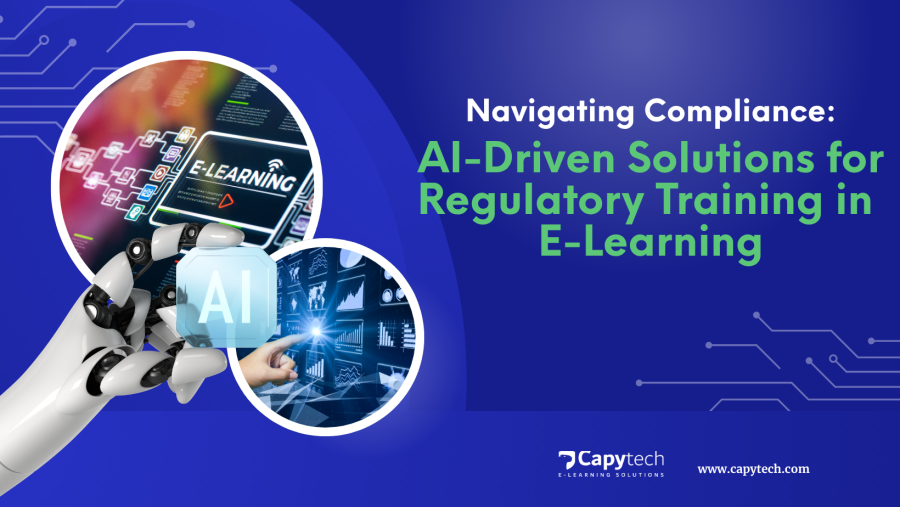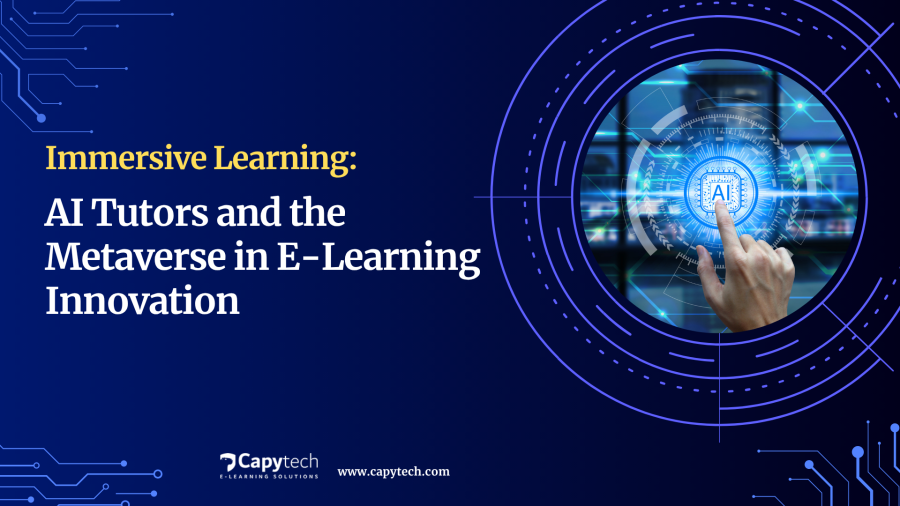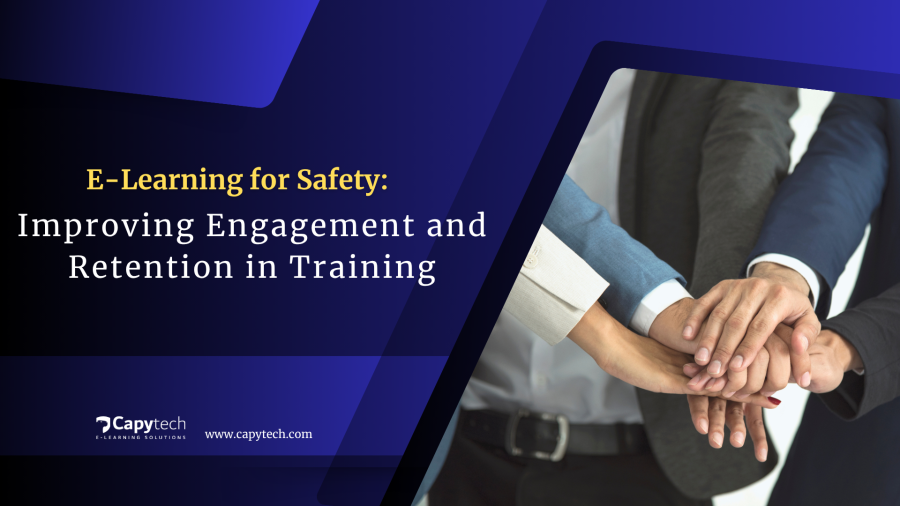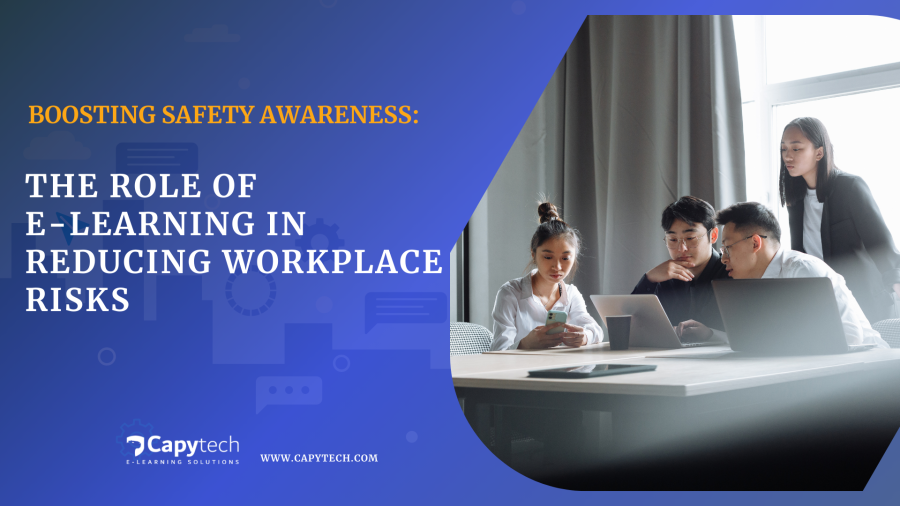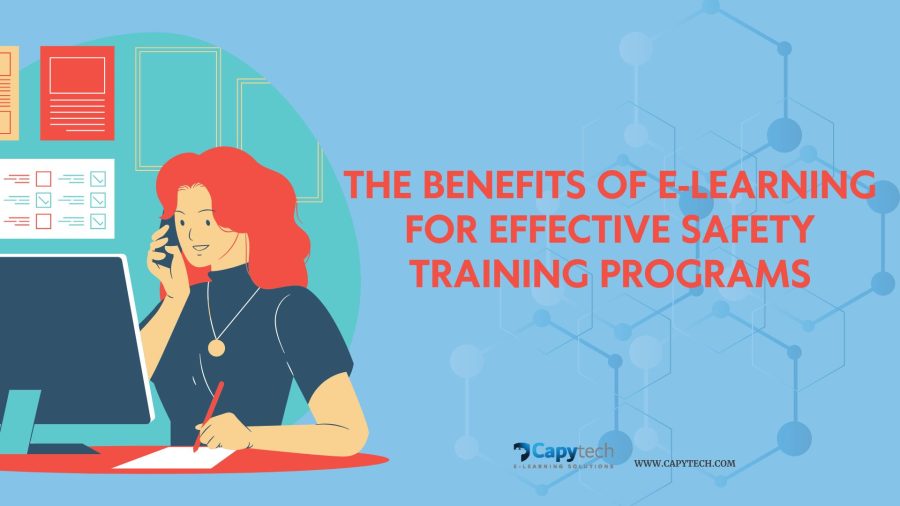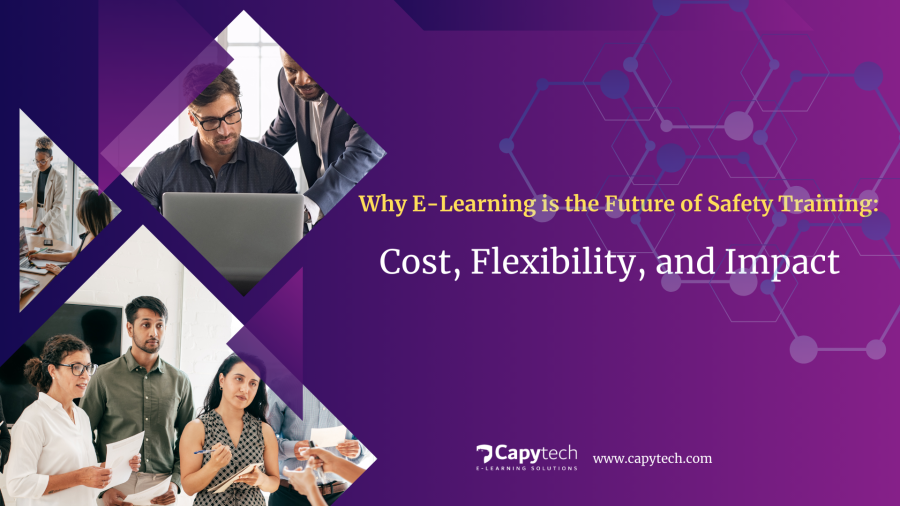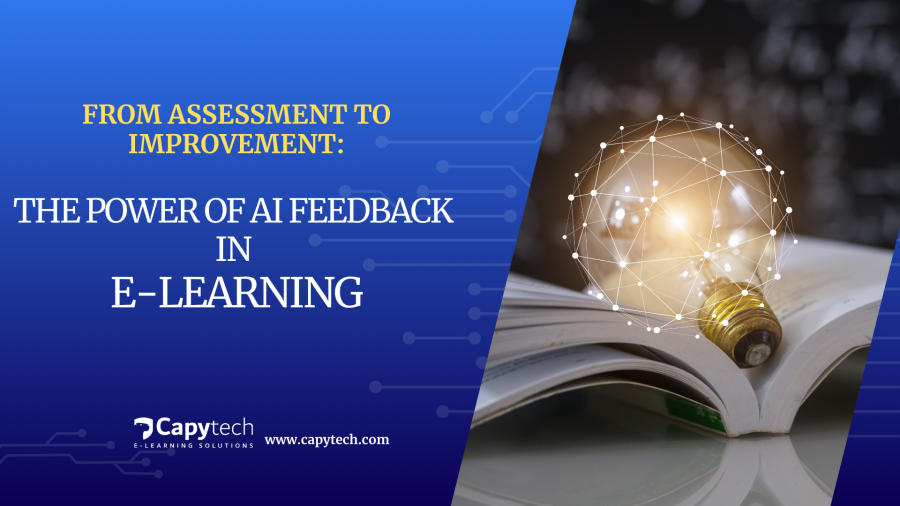Ensuring Compliance Through AI: Transforming E-Learning for Regulatory Success The integration of Artificial Intelligence (AI) into e-learning platforms is revolutionising the landscape of regulatory compliance training. Traditional methods of compliance training often struggle to keep pace with the rapidly changing regulatory environment and the diverse learning needs of a global workforce. However, the advent of AI in e-learning is setting …
Metaverse Classrooms: AI Tutors Redefining Personalised E-Learning
Metaverse Classrooms: AI Tutors Redefining Personalised E-Learning The advent of digital technology has ushered in a new era of educational paradigms, with the metaverse and Artificial Intelligence (AI) standing at the forefront of this transformation. As we delve deeper into the 21st century, the traditional classroom setting is being reimagined and redefined by virtual environments and AI tutors, offering unprecedented …
Navigating Compliance: AI-Driven Solutions for Regulatory Training in E-Learning
Navigating Compliance: AI-Driven Solutions for Regulatory Training in E-Learning The landscape of regulatory compliance training is evolving rapidly with the integration of digital technologies, particularly through e-learning platforms. In this modern era, the adoption of Artificial Intelligence (AI) in e-learning is not just an innovation but a necessity to ensure efficient, engaging, and effective training solutions. This post explores the …
Immersive Learning: AI Tutors and the Metaverse in E-Learning Innovation
Immersive Learning: AI Tutors and the Metaverse in E-Learning Innovation The digital transformation of educational landscapes has been profound, with e-learning emerging as a pivotal tool across various sectors, including safety training. The integration of Artificial Intelligence (AI) and the advent of the metaverse are now taking e-learning to unprecedented levels of personalisation, engagement, and effectiveness. This comprehensive exploration delves …
E-Learning for Safety: Improving Engagement and Retention in Training
E-Learning for Safety: Improving Engagement and Retention in Training The digital transformation of educational landscapes has significantly impacted various sectors, with e-learning emerging as a pivotal tool in delivering safety training. The integration of Artificial Intelligence (AI) into e-learning platforms has further revolutionised this field, offering personalised, engaging, and effective training solutions. This blog post delves into the intricacies of …
Boosting Safety Awareness: The Role of E-Learning in Reducing Workplace Risks
Boosting Safety Awareness: The Role of E-Learning in Reducing Workplace Risks In today’s fast-paced work environments, maintaining a safe workplace is paramount. With the advent of digital technology, e-learning has emerged as a vital tool in educating employees about safety protocols and reducing workplace risks. This blog post explores the significant role of e-learning in enhancing safety awareness among employees, …
The Benefits of E-Learning for Effective Safety Training Programs
The Benefits of E-Learning for Effective Safety Training Programs In the contemporary workforce, ensuring the safety and well-being of employees is paramount. As organisations strive to adhere to stringent health and safety regulations, the role of effective training programs cannot be overstated. With the advent of digital technologies, e-learning has emerged as a pivotal tool in the dissemination of safety …
Why E-Learning is the Future of Safety Training: Cost, Flexibility, and Impact
Why E-Learning is the Future of Safety Training: Cost, Flexibility, and Impact The landscape of training and development, especially in the context of safety, is undergoing a significant transformation. The advent of e-learning platforms has introduced a new paradigm, fundamentally altering how safety training is conceived, delivered, and received. This shift is not merely a trend but a response to …
Revolutionising Safety Training: How E-Learning Enhances Workplace Compliance
Revolutionising Safety Training: How E-Learning Enhances Workplace Compliance In the rapidly evolving world of workplace safety and compliance, the integration of e-learning has marked a significant shift in how organisations approach training and education. The digital revolution, propelled by advancements in artificial intelligence (AI), has not only transformed the delivery of educational content but has also redefined the strategies employed …
From Assessment to Improvement: The Power of AI Feedback in E-Learning
From Assessment to Improvement: The Power of AI Feedback in E-Learning In the ever-evolving landscape of e-learning, the integration of Artificial Intelligence (AI) has marked a revolutionary shift, not just in how courses are delivered, but also in how they are assessed and improved upon. AI’s role in gathering module feedback, as discussed in Exploring the Efficiency of AI in …

